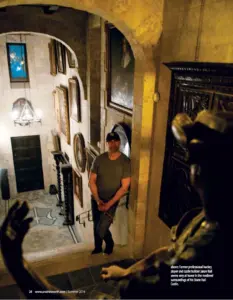Welcome to Regina, home to Canada’s only Medieval-style castle. We invite you to embark on a guided tour, guaranteed to astonish young and old alike. Scholars debate the scope of the word castle, usually considered to be the private fortified residence of a lord or noble during the Middle Ages. These castles, built in Europe and the Middle East, served a range of purposes from military, administrative and domestic. Towards the end of the Middle Ages, castles tended to lose their military significance due to the advent of cannons and permanent artillery fortifications. As a result, a castle became more of a residence and a statement of power and prestige of its occupant.
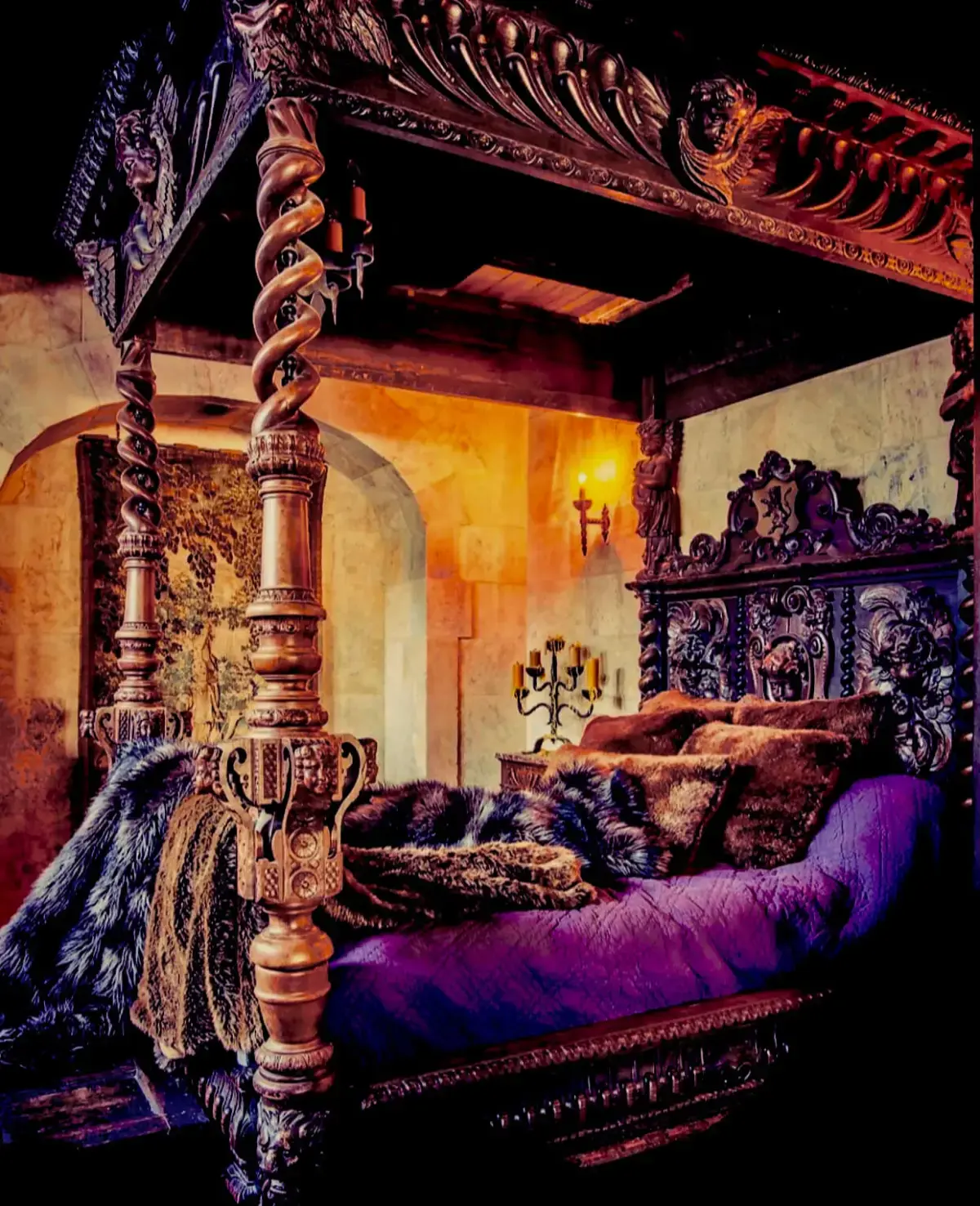
The story of Stone Hall Castle is a tale of two men, born over a century apart, connected by their construction of a stone fortress and their passion for real estate and living their lives to the fullest. The original occupant was real estate magnate Francis Nicholson Darke. His story, from humble farm boy beginnings to wealthy philanthropist, is a fairy tale in itself. Born in 1863 on a farm outside Charlottetown , PEI, Darke moved out west to seek his fortune in 1891. He returned briefly, in 1892 to wed Annie Elizabeth McKinnon. Before returning to Regina, he partnered with fellow Islander Pople Balderson . The two men raised livestock on a farm outside of Regina and would later purchase a butcher shop, which eventually supplied meat to the Residential schools and the North West Mounted Police. Darke bought out Balderson in 1894 and, with his business flourishing, took his earnings and purchased several blocks of land in town from the Canadian Pacific Railway. His real estate holdings were so profitable that it allowed him to sell his cattle business in 1906 to focus on land development.
Darke’s achievements are well documented : not only did he become the youngest mayor of Regina at the age of 35 (a record that still stands today), but he also was elected to the House of Commons in 1925. Darke’s philanthropic work was equally impressive. He donated $85,000 and raised another $40,000 more in 1910 to help establish Regina College, which would later become the University of Regina.
A lover of fine arts, he donated substantial monies for the construction of Darke Hall, a building for music and art, situated directly across the street from his own residence, which he would frequent for many years until his death, and some say beyond. Rumours of tunnels linking the two buildings have been around for years, and, although none have been discovered, many believe Darke, with such strong political powers and unlimited wealth, had made that condition before donating to the building that bears his name today.
Darke’s private life, however, has been less documented and, over the years, the castle he built has sadly been almost forgotten by all. Most local residents today may remember going there to pay their last respects to a family member or refer to it simply as the old Helmsing place.
The history surrounding this castle is as intriguing as its original owner. It is a little known fact that the original Darke residence, located where the Hotel Saskatchewan stands today, was damaged during the devastating cyclone of 1912, which tore a path through downtown Regina. Legend has it that his beloved wife Annie was so shaken by that event that she pleaded with him to build a home where she could feel safe again. If it weren’t for this natural disaster, this castle would probably never have been built.
In his early sixties, with the children all grown, Darke set out to build his Annie her fortress. He resolved to use the most durable building materials to withstand the unforgiving Saskatchewan Prairie cyclones. He had to look no further than another Prairie castle located directly across the lake from his new location. The Saskatchewan Legislative Building, which survived the cyclone, was built from solid limestone a few years earlier. With cost being no concern for the wealthy Darke, he imported the exact limestone used on the Legislative Building — an action unheard of in its time for a local residence — and work began.
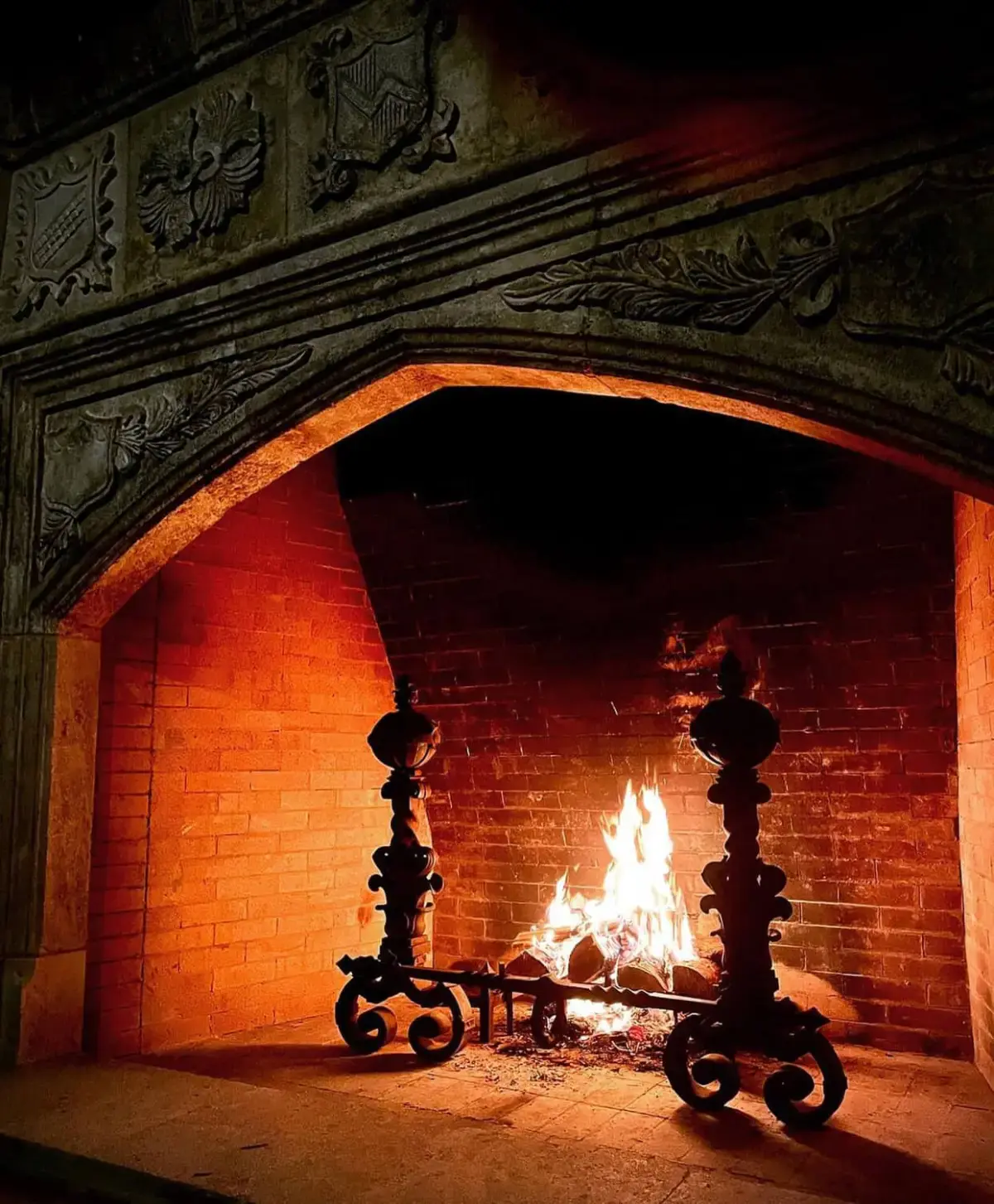
In 1926, Darke, with the help of the finest masons, carpenters and artisans of his time, delivered on his promise to his beloved Annie and presented her with a solid stone fortress complete with stone roof and bomb shelter in the basement . This building was built to withstand anything that Mother Nature could deliver. Francis Nicholson died on July 17, 1940 and, true to his word, the castle that he built kept Annie safe until she died there, alone, at the age of 95 years in 1964.
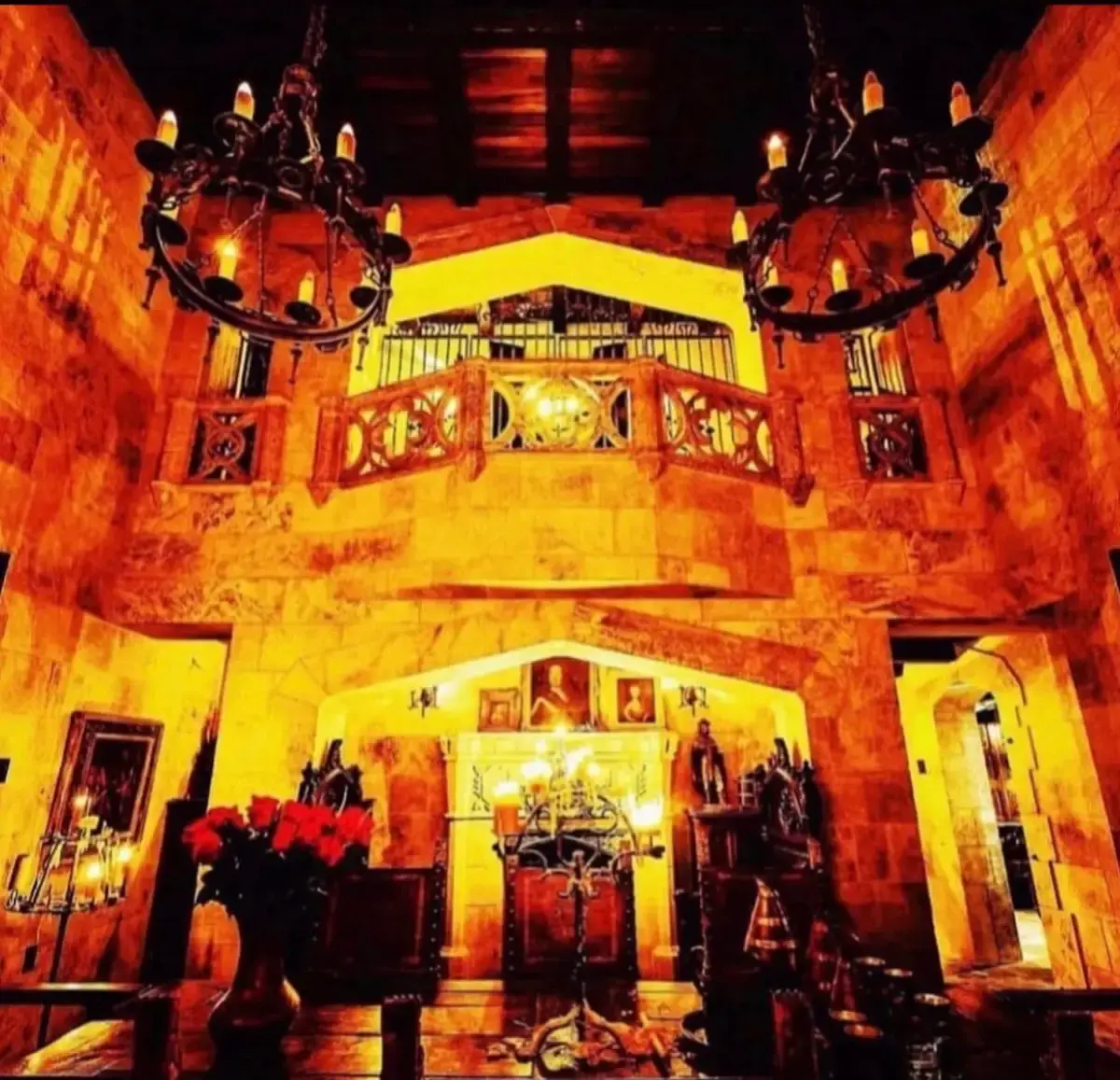
After the death of Annie, the once great fortress that Francis had built sat empty for a number of years, falling further and further into disrepair. During the seventies when larger, older buildings were falling out of fashion as single-family homes, the land and building were purchased by Hewitt Helmsing, who established Helmsing Funeral Chapel. Helmsing eventually sold the property. Although it did still function as a well-respected funeral chapel for over thirty years, its interior was drastically altered, and large-scale additions took place in the early eighties. The castle across from the park was now perceived locally as one of two funeral parlors located on College Avenue. The Darke name was rarely associated with the building, let alone the man who built the fortress across from Wascana Park to protect his lady love. Rumours of unruly spirits have plagued the castle since its change of use, dating as far back as the seventies. They are now a part of its legacy.
Not since the golden years of the legendary Francis Nicholson Darke has Stone Hall Castle functioned as a personal residence, until now, that is.
Regina-born real estate investor Jason Michael Hall, who purchased Stone Hall Castle in 2003, now calls the castle home. Hall, who headed overseas shortly after high school to pursue his dreams of playing professional hockey, fell in love with Europe and all of its splendor. After twelve years of living out his dreams, Hall opted to close that door to open another in his home town of Regina — this time as a real estate investor./p>
Having enjoyed his own early successes in local real estate investments, much as Darke did over a century earlier, Hall made a bold move and started the daunting task of taking this once great local landmark and breathing life back into it. With an incredible eye for detail, he saw something in this building that others failed to recognize. The exterior façade, with its stone walls, stone crenellations, slate roof and copper troughs, reminded him of his life in Europe. Hall identified that this was a structure that was built to last. His main objective was to take the inside of this stone fortress and give it the interior it so much deserved, to match its castle-like exterior.
Hall commissioned his team to start removing walls, flooring, ceilings, wiring, and plumbing to the point where its entire interior became nothing but a shell, showing none of its original Art Deco past. Now, with all interior outer walls stripped down to red clay brick, the process began of rebuilding it from the inside out. Months turned into years of constant structural reinforcing, allowing for its complete metamorphosis — all to achieve Hall’s vision of a full-fledged Medieval Castle.
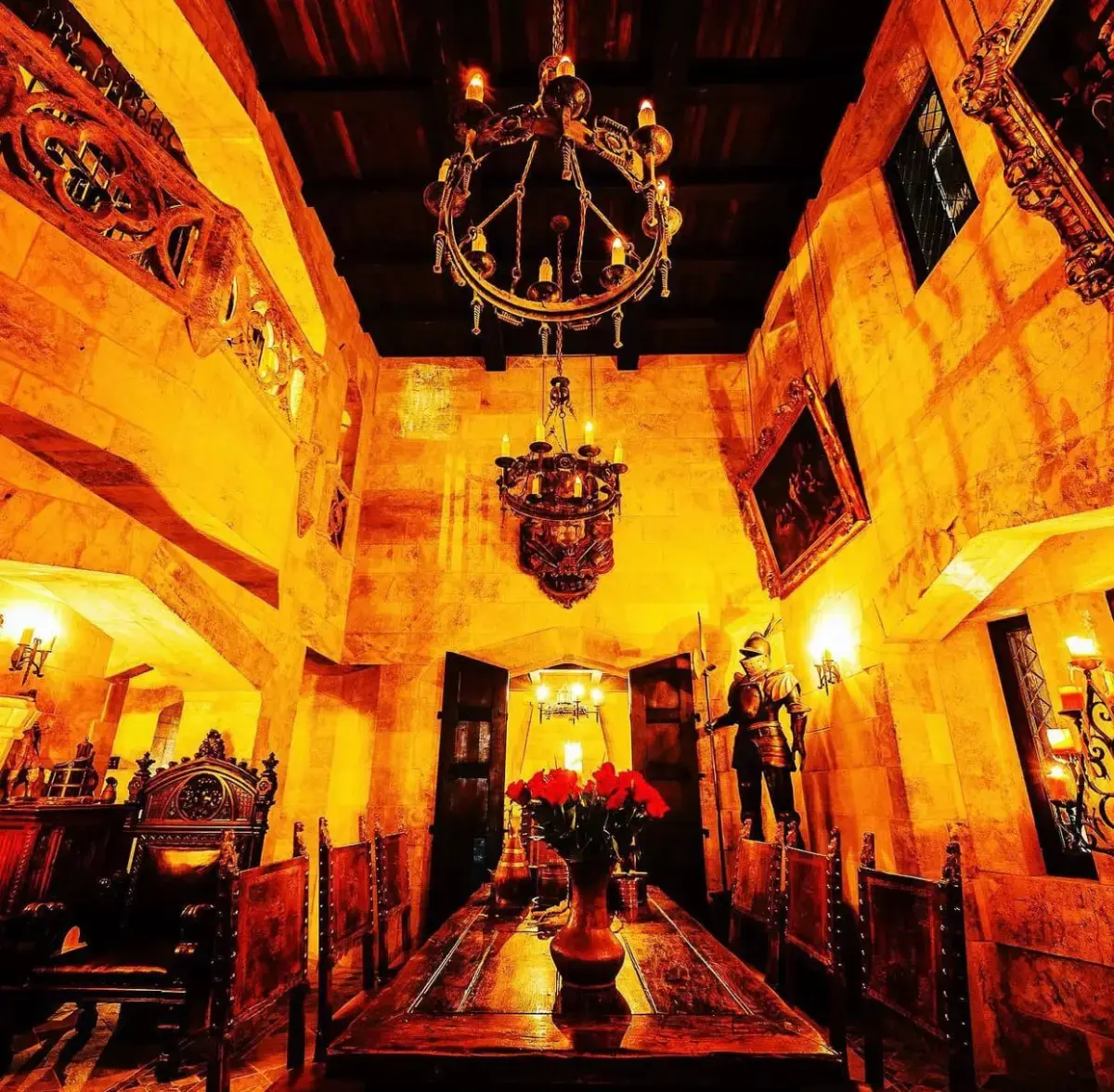
Finally, after years of designing architectural details and importing thousand-year-old limestone from Greece, Jason Hall’s castle opened to the public in November 2015 for its debut. It was, of course, unlike anything Canada had seen. Several container loads of 16th, 17th and 18th century museum quality furniture, tapestries and original Old Masters oil paintings adorn his castle, taking his guests back to a time when lords, nobles and their knights controlled most European cities and countryside’s. Jason and his handpicked team of local artisans really have created something so special and unique to Canadian soil that it is nothing short of incredible. Daily tours run 7 days a week for visitors to witness old Europe first hand and to a glimpse of what happens when one man’s passion and obsession become a reality.
